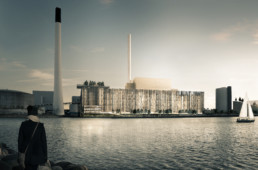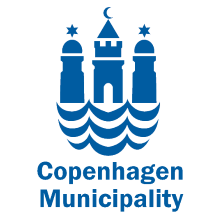Copenhagen is making the world’s largest district heating system carbon neutral by substituting fossil fuels with biomass.
The Danish capital has the world’s largest district heating network. The system serves 98% of Copenhagen’s buildings. Over a 15-year period ending in 2025, the Greater Copenhagen Utility (HOFOR) will make the system carbon neutral by transitioning from coal, oil, and natural gas to sustainable biomass. To produce carbon-neutral heating, HOFOR will replace fossil fuels at large combined heat and power (CHP) plants with wood pellets from sustainably grown forests. It will also deploy large-scale heat pumps that run on wind energy and geothermal energy and incorporate heat storage provided by large water tanks.

The plan also aims to reduce energy consumption in buildings and homes through remote monitoring of customers’ energy use. If a large deviation occurs, the customer will be alerted and she can review the heating unit for errors and ensure optimum settings and operation. Finally, real-time monitoring of the distribution system, and the use of weather forecasts to ensure operational efficiency, will reduce heat losses in the district heating system by 6% by 2025.
500,000 tons of CO2 reduced per year by 2025
The challenge
To achieve carbon-neutral heating in Copenhagen’s comprehensive district heating system, the city decided to focus on upgrading old coal-fired combined heat and power plants so they will now be fired with wood pellets. The city will also construct a new wood chip-fired combined heat and power plant. To diversify the energy sources needed and increase the flexibility of the system, Copenhagen is also testing the possibility of using large heat pumps to capture the heat from cleaned wastewater, drinking water, industrial surplus heat, and geothermal wells.
Co-benefits
Economic Upgrading existing combined heat and power plants, and constructing a new CHP facility, will create local employment.
Environmental The plan includes building a 65-MW geothermal renewable energy facility.
Health By establishing a small number of large combined power and heat plants, emissions will come from a few large chimneys, all equipped with efficient filters that remove NOx, SO4, and particles from the exhaust, which will reduce air pollution in the city.
About Copenhagen
Copenhagen is the capital and most populous city of Denmark. The city has a population of 763,908 (as of December 2016), of whom 601,448 live in the Municipality of Copenhagen. Copenhagen is situated on the eastern coast of the island of Zealand; another small portion of the city is located on Amager, and is separated from Malmö, Sweden, by the strait of Øresund. Originally a Viking fishing village founded in the 10th century, Copenhagen became the capital of Denmark in the early 15th century. Since the turn of the 21st century, Copenhagen has seen strong urban and cultural development, facilitated by investment in its institutions and infrastructure. Copenhagen’s economy has seen rapid developments in the service sector, especially through initiatives in information technology, pharmaceuticals and clean technology.


